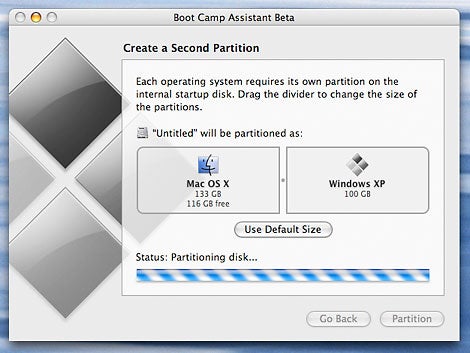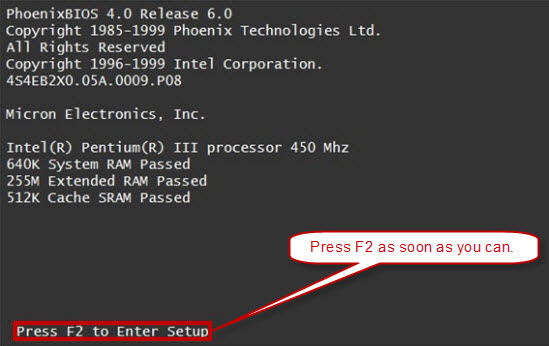
- #Phoenix bios boot utility for mac bootcamp code
- #Phoenix bios boot utility for mac bootcamp zip
- #Phoenix bios boot utility for mac bootcamp windows
I've heard that multi-partition usbkeys can conflict with some older BIOSes. Some BIOSes will "just work" with that config, and at least some distros will see both partitions on the usbkey, but when you put the same usbkey into winXP you only see the first fat32 partition (since XP doesn't grok ext4 by default). parttn#1 can be a 2gb fat32, and parttn#2 can be 6gb ext4 with a bootable 64bit Linux distro. Other multiboot utils let you format your usbkey with HDD-style (non-GPT) partitions, so e.g.
#Phoenix bios boot utility for mac bootcamp zip
Some multiboot tools format them like ZIP drives, with a partition table that is mostly empty. Presumably none of this El Torito / ISO9660 stuff applies to thumb-drives and SD cards (when those are bootable), correct?īut don't you have the same problems with the BIOS sometimes not being willing to boot from a usb key that has been formatted with multiple partitions? Most usbkeys are 'supposed' to be formatted like floppies, with no partition table.
#Phoenix bios boot utility for mac bootcamp windows
32-bit Windows (and Linux) was fine because it didn't include a UEFI boot image and so didn't trigger the bug. Apple rectified this by stating that 64-bit Windows wasn't supported on platforms with 32-bit UEFI, which is a neat trick if you can manage it. This was fine on their 32-bit systems, but on their 64-bit systems with 32-bit UEFI booting a 64-bit version of Windows would result in boot failure.

Until recently, the only vendor to ship 32-bit UEFI firmware on volume hardware was Apple. See the number that still don't manage it despite having had several years to adapt (If you're worried about the extra memory consumption of 64-bit OSes, just encourage 32-bit userspace on a 64-bit kernel.

Just say what on earth were you thinking, please, no, can't you find a solution that doesn't involve me getting tetanus jabs.

If you ship with 32-bit UEFI, no significant existing Linux distribution will support you, and you'll face an uphill battle to convince them to do so.ģ2-bit UEFI. If you have a 64-bit CPU then ship a 64-bit UEFI. If you're stuck with a 32-bit CPU then just ship BIOS. So, if you're building an x86 hardware platform, don't ship with 32-bit UEFI. Unsurprisingly, they tend to choose the second option. They can either produce UEFI-bootable CD images for 32-bit x86 and risk failures on actual 32-bit systems, or they can ignore UEFI entirely on 32-bit and succeed in booting on all the hardware that people actually own. Having looked into what it'd take to implement it in Linux, I decided that hammering rusty nails through my feet would be a preferable use of time. The only OS I'm aware of that implements this is MacOS X. A 64-bit OS can only boot on 32-bit UEFI if it has very ugly compatibility hacks, including having to rewrite structures and register state every time it makes a UEFI call.
#Phoenix bios boot utility for mac bootcamp code
That means that 32-bit UEFI systems can't execute 64-bit code in firmware, even if the CPU is capable of it. UEFI is based on executing code in native mode. Things get irritatingly more complicated due to a quirk of UEFI. Thankfully, this is pretty much exclusively limited to 32-bit systems.

The most common failure case is to print a menu asking you to choose an option without labelling the options, but some will just fail outright. Unfortunately, various BIOSes deal exceptionally badly with CD images that contain more than one El-Torito image. So, if you want a CD that'll boot on both BIOS and UEFI systems, you need two El-Torito images - one for BIOS, one for UEFI. UEFI systems will look for an El-Torito image with a special tag - if they find it they'll mount it as a FAT filesystem and look for a bootloader, and if not they'll fall back to BIOS compatibility. This allows BIOS systems to look for an El Torito image, hook some interrupts and then boot without the BIOS having to care about the fact that the image is embedded in an ISO-9660 filesystem. An El-Torito image is either an image of a floppy disk or a small hard drive, embedded into the ISO. TileYSpace 56.Shipping a UEFI-bootable Linux distribution is a touch awkward, with the main sticking point being the necessity to produce boot media with multiple El-Torito images. Origination 55.ĭesignWidth 55.ĭesignHeight 55.


 0 kommentar(er)
0 kommentar(er)
